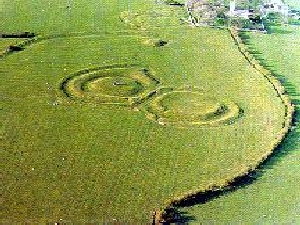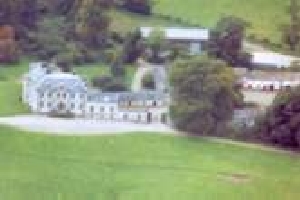Here are a list of Historical Hills In Ireland.
Hill of Tara 
Famous as the seat of the High Kings of Ireland, the Hill of Tara has been an important site since the Stone Age, when a passage tomb was constructed. Tara was a political and religious centre in early Christian times and though it declined in importance as Christianity spread in Ireland, the site still retains its air of mysticism.
Today the ruins are sadly deserted, poignant reminders of what once was, but from atop the hill the visitor can still experience some of the magic which first drew kings to Tara. A magnificent panorama unfolds before the eye, though the concept of an all-powerful High-King of Ireland is largely mythical, there can be little doubting the importance of one who controlled such a strategic location as Tara.
Primarily an Iron-Age fortress (circa 500 B.C.) remains of an older neolithic passage-grave (c.1800 B.C.) have also been unearthed. However, it was not until the reign of the legendary Cormac MacAirt in the 3rd century A.D. that Tara reached the pinnacle of its splendour.
Hill of Tailte 
Half-way between Navan and Kells (N3) rises the Hill of Tailte, where the famous annual Tailtean Games and Fair of ancient Ireland were held. Established by King Lugh Lamhfhada (Lugh Long-hand) and named in honour of his step-mother, Tailte (daughter of the King of Spain and wife of Eochaidh, last of the Kings of Firbolgs), the Tailteann celebrations were amongst the great ceremonial occasions of pagan Ireland. Held in ceremonial fashion for the last time in 1168 under Roderick O’Connor, the last High King of Ireland, informal gathering continued until the middle of the eighteenth century. After the foundation of the Free State an attempt was made to revive the festival and the Tailteann Games were held in the late 1920′s, mainly concentrating on sporting events. The earthworks are all that remain of this important ceremonial site.
Slieve Breagh or Downeys Mountain<\h2>
Approximately 5 miles (8 kms) north of the entrance gates to Slane Castle on the Carrickmacross road, near Lobinstown, this hill dominates the surrounding countryside. The site has many prehistoric remains, among them the outline of houses associated with 4th-century neolithic farmers. There are at least thirty other prehistoric monuments including ring forts in the district (the most prominent called the ‘Cup and Saucer’ can be seen on an adjoining hill). The spectacular views may explain the presence of remains from so many ages.
The Scalp
About 2 miles (3 km) north of Enniskerry, the main road to Dublin passes through the Scalp - a spectacular rocky defile rising steeply on either side of the road, with huge granite boulders strewn about in wild confusion. It is a good example of a ‘dry gap’ formed at the end of the Ice Age when streams from glaciers cut deep drainage channels.
Shandon Park Mound<\h2>
This tall mound, planted with conifers, looks like a Norman motte without a bailey. it is likely to be one of the numerous earthworks erected by the Anglo-Normans between 1177 and the mid 13th century to keep a tight hold on the lands they conquered in Co. Down. As the name Shandon is derived from the Irish words ‘old fort’, it is possible that the mound was built on the site of an earlier Irish fortification.
Reached by a narrow path between the houses numbered 45 and 47 on Shandon Park in the Belfast suburb of Knock, and overlooking Shandon Park golf course.
Knockmany Hill
Knockmany Hill, 2 miles north west of Augher, si topped by a large passage grave with stones incised with swirling patterns. The spiral motives are similar to those at Newgrange in County Meath. A cairn was built over the top in 1959 to protect the Knockmany grave, which appears above ground in old photographs. To get inside the tomb, ask at the ranger’s house at the forest entrance, though there is a general view of the stones through an iron grid. The mythological mother goddess Aine, loved by the warrior Finn McCool, is traditionally buried on top of this hill.
Dun Dealgan, Dundalk, Louth
A mound rising over 60 feet high that is said to be the birthplace of the legendary hero Cuchulain.On the summit is the ruin of a house built in 1780.
Sliabh na Cailligh, Meath
Dating to the 3rd millennium B.C., the site is known in Irish as Sliabh na Caillighe - ‘the Hill of the Witch’, legend declaring that the mounds and cairns were created by an over-flying witch dropping pebbles on the landscape. The view from atop the hills is one of subtle and varied contrasts, the rolling fertile lands of Meath stretching to the south and east, the lakelands and expansive flat plains of Cavan and the Midlands seemingly limitless as they spread towards the Shannon.
